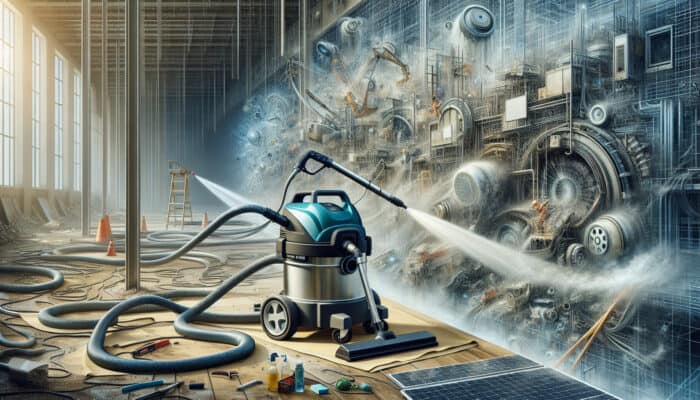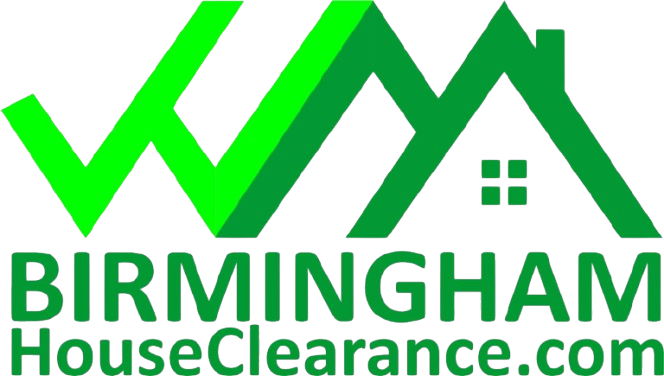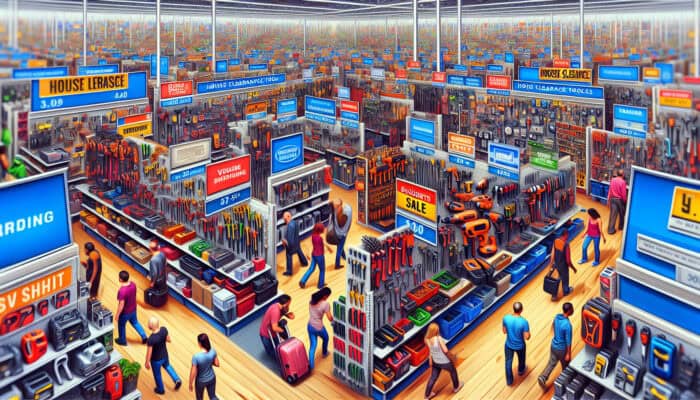Comprehensive Guide to Post-Clearance Cleaning in the UK
What Exactly is Post-Clearance Cleaning?

Post-Clearance Cleaning Methods in the UK: Post-clearance cleaning is a specialised cleaning process conducted after construction or renovation activities have been completed. This meticulous procedure involves the thorough removal of debris, dust, and various construction residues, ensuring that the space is not only immaculate but also safe for future inhabitants and users. Typically, this process includes a detailed scrubbing of surfaces, proper disposal of waste materials, and sanitising areas to restore them to a habitable state. The work can encompass residential properties, commercial spaces, or even industrial sites, each one presenting unique challenges that require specific techniques and equipment to address.
In the UK, the practice of post-clearance cleaning is increasingly recognised as an essential component of any construction project. Once builders have vacated the premises, the area may still be littered with remnants of materials such as plaster, paint, and fine dust that can pose serious health risks and impede immediate use. Therefore, post-clearance cleaning plays a vital role in restoring the environment’s functionality, facilitating a seamless transition from the construction phase to actual occupancy.
Why is Post-Clearance Cleaning Crucial?
The importance of post-clearance cleaning cannot be overstated, particularly in terms of health and safety. A clean environment following construction is critical not only for enhancing the aesthetic appeal of a property but also for ensuring it is safe for occupancy. Residual dust and debris can lead to a range of health issues, including respiratory problems and allergies. Conducting proper cleaning effectively eliminates these potential hazards, thereby safeguarding inhabitants and promoting a healthier living or working environment.
In addition to addressing health concerns, post-clearance cleaning is vital for compliance with safety regulations established by UK law. These regulations stipulate that all construction sites must be left in a safe and tidy condition, minimising risks associated with leftover materials, and ensuring that properties meet required standards before occupancy. Therefore, post-clearance cleaning is an indispensable aspect of responsible construction practices in the UK.
What Are the Legal Requirements for Post-Clearance Cleaning in the UK?
In the UK, there are stringent legal requirements governing post-clearance cleaning, primarily aimed at ensuring safety and compliance with health regulations. Construction sites must adhere to the Health and Safety at Work Act 1974, which outlines the responsibilities of employers and contractors to provide a safe working environment. This legislation extends to the post-construction phase, mandating that all debris, hazardous materials, and construction waste be appropriately managed and disposed of.
Furthermore, the Control of Substances Hazardous to Health (COSHH) regulations dictate that all cleaning agents used during the post-clearance process must be safe and handled correctly to minimise health risks. Additionally, specific guidelines related to waste management under the Environmental Protection Act 1990 require that waste be disposed of in a manner consistent with environmental safety standards. Non-compliance with these regulations can result in significant penalties, making adherence to legal requirements a top priority for both contractors and cleaning services.
Best Practices for Effective Post-Clearance Cleaning

Implementing best practices in post-clearance cleaning is essential to ensure thorough and effective results. Firstly, it is crucial to employ high-quality cleaning equipment specifically designed for post-construction tasks. Industrial-strength vacuum cleaners equipped with HEPA filters are particularly effective in trapping fine dust particles, preventing them from being released back into the air. Additionally, using Pressure washers can help remove stubborn grime and residue from surfaces, ensuring a thorough clean.
Secondly, it is imperative to follow a systematic cleaning process. This typically involves a step-by-step approach, starting with the removal of larger debris, followed by surface cleaning, and finally, detailed dusting and sanitising. Workers should always wear appropriate personal protective equipment (PPE), such as gloves, masks, and goggles, to safeguard against exposure to potentially hazardous substances and ensure their safety during cleaning operations.
Lastly, a thorough verification of the cleaning process is crucial. A final walkthrough inspection should be conducted to ensure all areas have been properly addressed and that the environment meets the required standards for occupancy. This systematic approach promotes safety and guarantees a clean and welcoming space for future occupants.
Environmental Considerations for Sustainable Post-Clearance Cleaning
Environmental considerations are increasingly becoming a central focus in post-clearance cleaning practices. It is essential to adopt strategies that minimise the ecological footprint of cleaning processes. For instance, utilising eco-friendly cleaning agents that are biodegradable and non-toxic helps reduce harmful impacts on both the environment and human health.
Proper waste disposal is another critical factor in eco-friendly post-clearance cleaning. Waste generated during construction, including hazardous materials, should be sorted and managed according to UK waste management regulations. This includes recycling materials where possible, thereby reducing landfill contributions and promoting sustainability within the industry.
Moreover, adopting green cleaning practices, such as using microfibre cloths and mops, can significantly reduce water and chemical usage. Implementing these environmentally conscious practices not only benefits the planet but also enhances the overall safety and cleanliness of the post-construction environment.
Expert Insights into Post-Clearance Cleaning Techniques in the UK
What Are Some Successful Post-Clearance Cleaning Projects in the UK?

Numerous successful post-clearance cleaning projects across the UK exemplify the efficacy of specialised cleaning methods. Notable examples include the refurbishment of the Tate Modern in London, where advanced dust control methods ensured minimal disruption during the cleaning phase. Another instance is the comprehensive cleaning of a new residential complex in Manchester, which utilised eco-friendly products to maintain high environmental standards.
- A commercial office renovation in Birmingham implemented systematic cleaning protocols, resulting in a swift turnover to occupancy.
- The restoration of historic buildings in Edinburgh showcased careful cleaning methods that preserved delicate materials while ensuring a safe environment.
These case studies illustrate the diverse approaches and techniques employed in various projects, highlighting the importance of tailored cleaning solutions that meet the unique challenges of each site.
What Are the Best Practices for Post-Clearance Cleaning?
Adopting best practices for post-clearance cleaning can significantly enhance the effectiveness of the cleaning process. Utilising high-quality equipment is paramount; for instance, industrial vacuum cleaners with HEPA filters excel in trapping fine dust particles, thereby improving air quality. A systematic approach should be employed, initiating with the removal of large debris, followed by surface cleaning, and concluding with detailed dusting and sanitising.
Furthermore, regular inspection throughout the cleaning process can ensure that no area is overlooked. Workers should don appropriate personal protective equipment (PPE), including gloves and masks, to mitigate exposure risks. This adherence to best practices not only fosters a thorough cleaning outcome but also guarantees safety for both workers and future occupants of the space.
What Actionable Steps Can Be Taken to Implement Post-Clearance Cleaning Methods in the UK?
To effectively implement post-clearance cleaning methods in the UK, follow these actionable steps:
- Conduct a thorough site assessment to determine the scope of cleaning required.
- Develop a detailed cleaning plan that outlines specific tasks and timelines.
- Gather high-quality cleaning equipment and eco-friendly products.
- Assign roles and responsibilities to team members to ensure efficiency throughout the process.
- Execute the cleaning plan systematically, ensuring each stage is completed before progressing to the next.
- Perform quality checks throughout the process to maintain standards of cleanliness.
- Finalise with a comprehensive inspection and verification of the cleaned space to ensure it meets all required standards.
By adhering to these steps, cleaning teams can ensure a comprehensive and effective post-clearance cleaning process that meets all necessary standards and regulatory requirements.
How to Choose the Right Post-Clearance Cleaning Services in the UK?
Selecting the right post-clearance cleaning service is essential to ensuring a thorough and professional cleaning job. Key considerations include the experience of the service provider; companies with a proven track record in post-clearance cleaning are more likely to understand the specific requirements and challenges involved in the process.
Equipment is another critical factor; ensure that the cleaning service employs high-quality, specialised equipment suited for post-construction tasks. Client reviews and testimonials can provide valuable insight into the service’s reliability and effectiveness. Finally, it is advisable to choose a service that specifically focuses on post-clearance cleaning, as their expertise will guarantee a more comprehensive cleaning approach tailored to your needs.
The Role of Technology in Enhancing Post-Clearance Cleaning Efficiency
The integration of technology in post-clearance cleaning has revolutionised the efficiency and effectiveness of cleaning processes. Advanced tools, such as HEPA-filter vacuums, are particularly adept at capturing fine dust particles, significantly improving indoor air quality. Furthermore, electrostatic sprayers enhance disinfecting capabilities by ensuring an even distribution of cleaning solutions, which is crucial in eliminating pathogens in newly constructed spaces.
Robotic cleaning devices are also emerging as a viable option, automating certain aspects of the cleaning process and allowing for more consistent results. These technological advancements not only streamline post-clearance cleaning tasks but also reduce overall labour costs, making the process more efficient and effective while ensuring a high standard of cleanliness throughout the environment.
How Does Post-Clearance Cleaning Impact Health and Safety in the UK?
What Health Risks Are Associated with Poor Post-Clearance Cleaning?
Poor post-clearance cleaning poses significant health risks, primarily due to the accumulation of dust and debris. Residual particles can lead to respiratory issues, allergies, and other health complications, particularly for sensitive individuals. Inadequate cleaning can also result in the presence of hazardous materials, such as lead dust or asbestos fibres, which can have severe long-term health implications.
Moreover, a cluttered environment can contribute to mental stress, as it may create an overwhelming atmosphere that hinders relaxation and productivity. Effective post-clearance cleaning directly mitigates these risks, ensuring that spaces are free from harmful substances and conducive to a healthy lifestyle.
How Can Post-Clearance Cleaning Prevent Accidents?
Post-clearance cleaning plays a pivotal role in accident prevention within newly constructed or renovated spaces. By systematically removing debris and hazardous materials, the likelihood of trips and falls is significantly reduced. Construction sites often harbour loose cables, uneven surfaces, and leftover tools, all of which can pose serious safety risks if not addressed promptly.
Moreover, a clean environment facilitates better navigation, as clear pathways enable occupants to move freely without obstruction. This emphasis on cleanliness is crucial not just for immediate safety concerns but also for fostering an overall culture of safety within the premises.
Why is Dust Control So Important in Post-Clearance Cleaning?
Effective dust control is paramount in the post-clearance cleaning process, as it significantly impacts health and air quality. Dust can be a breeding ground for allergens and irritants, leading to respiratory problems and other health issues. Techniques such as using HEPA filters in vacuums and employing wet cleaning methods are widely recommended to capture and eliminate dust particles efficiently.
Moreover, implementing dust control measures during the cleaning process helps maintain a clean environment for future occupants. Regular air quality assessments can also provide insight into the effectiveness of dust control practices, ensuring that the environment remains safe and healthy for everyone involved.
Trusted Strategies for Post-Clearance Cleaning in the UK
What Is the Most Effective Cleaning Equipment for Post-Clearance Cleaning in the UK?
The effectiveness of post-clearance cleaning is heavily influenced by the quality of cleaning equipment utilised in the process. Industrial vacuum cleaners equipped with HEPA filters are considered essential, as they effectively capture fine dust that traditional vacuums may miss. Pressure washers are also highly effective, especially for exteriors and hard surfaces, where stubborn grime often accumulates.
Additionally, specialised dust control systems, such as air scrubbers and electrostatic sprayers, play a crucial role in enhancing cleaning efficiency by ensuring thorough sanitation and air purification. These tools not only improve the overall cleanliness of the environment but also significantly reduce the time taken to achieve desired results, streamlining the entire post-clearance cleaning process.
How Can Post-Clearance Cleaning Be Tailored for Different Types of Projects?
Post-clearance cleaning strategies should be tailored to the specific requirements of different projects. Residential properties often necessitate a focus on living spaces, ensuring that kitchens, bathrooms, and bedrooms are not only clean but also safe for families. This might involve more detailed cleaning tasks, such as sanitising surfaces and removing dust from less accessible areas.
Conversely, commercial projects may prioritise work areas, where the emphasis is on creating a functional environment that meets operational needs. In such cases, cleaning protocols may be adapted to ensure that office spaces are free from hazards and ready for immediate use. Optimising cleaning methods based on project type ensures that all unique challenges are addressed effectively and efficiently.
What Are the Financial Considerations of Post-Clearance Cleaning?
The costs associated with post-clearance cleaning can vary widely based on several factors, including the size of the project, the level of cleaning required, and the equipment used. For instance, large commercial projects may entail higher cleaning costs due to the extensive labour and specialised equipment needed for thorough cleaning.
Understanding these financial implications is essential for effective budgeting and planning. Engaging professional cleaning services can incur upfront costs; however, the long-term benefits, such as enhanced safety and improved air quality, often outweigh these initial expenses. Therefore, investing in quality post-clearance cleaning can be viewed as a necessary expense that yields significant returns over time.
What Are the Environmental Considerations for Post-Clearance Cleaning in the UK?
How Can Post-Clearance Cleaning Practices Be Made Eco-Friendly?
Eco-friendly post-clearance cleaning practices are increasingly vital in the construction industry. Utilising environmentally safe cleaning products that are biodegradable and non-toxic not only protects the environment but also reduces harmful impacts on human health. Additionally, implementing waste reduction strategies, such as recycling materials and properly disposing of hazardous waste, is crucial in minimising the ecological footprint of cleaning processes.
By prioritising eco-friendly practices, contractors and cleaning services can significantly reduce the environmental impact of their operations while promoting sustainability in the construction sector. This commitment to environmentally conscious methods not only benefits the planet but also enhances the reputation of the companies involved in the cleaning process.
What Waste Management Strategies Should Be Employed in Post-Clearance Cleaning?
Effective waste management is a critical component of post-clearance cleaning in the UK. Proper sorting and disposal of debris, including hazardous materials, are necessary to comply with UK regulations and ensure environmental safety. This may involve segregating waste into recyclable and non-recyclable materials, adhering to the guidelines established by the Environmental Protection Act 1990.
Moreover, collaborating with licensed waste disposal companies can facilitate the proper handling of hazardous substances, such as asbestos or lead-based materials, thus preventing potential health risks. Implementing a comprehensive waste management strategy not only enhances the cleanliness of the site but also underscores a commitment to environmental responsibility within the construction industry.
Why Should Green Cleaning Products Be Used in Post-Clearance Cleaning?
The utilisation of green cleaning products is a growing trend in post-clearance cleaning, as the industry moves towards more sustainable practices. These environmentally friendly products are designed to minimise harmful impacts while effectively maintaining cleanliness. Popular green cleaning products used in the UK include:
- Eco-friendly all-purpose cleaners.
- Biodegradable surface sanitisers.
- Natural degreasers free from harsh chemicals.
- Concentrated cleaning solutions that reduce packaging waste.
- Citrus-based cleaners that are both effective and safe.
- Vinegar and baking soda are commonly used for DIY cleaning solutions.
Adopting such products not only enhances the safety of cleaning processes but also contributes to a healthier indoor environment for future occupants, thereby promoting overall well-being.
What Are the Future Trends in Post-Clearance Cleaning in the UK?
What Are the Technological Advances Shaping Post-Clearance Cleaning?
Technological advancements are poised to transform post-clearance cleaning practices in the UK. Innovations such as robotic cleaning devices are becoming more prevalent, offering efficient and consistent cleaning solutions. These automated systems can cover large areas quickly, significantly reducing labour costs while ensuring thorough cleaning.
Furthermore, advanced filtration systems are continually being developed to enhance air quality both during and after the cleaning process. The integration of these technologies not only enhances cleaning efficiency but also aligns with sustainability goals by reducing the environmental impact of cleaning operations.
What Role Will Automation Play in the Future of Post-Clearance Cleaning?
Automation is expected to play a pivotal role in the future of post-clearance cleaning. Automated systems can streamline various aspects of the cleaning process, from dust control to surface sanitisation, thereby improving overall efficiency. This shift towards automation may significantly reduce labour costs, allowing companies to allocate resources more strategically to areas that require human intervention.
Moreover, automation can ensure a higher standard of cleanliness, as machines can perform tasks with precision that may be challenging for human workers. As technology continues to evolve, the integration of automated systems in post-clearance cleaning will likely become a standard practice, revolutionising the industry and setting new benchmarks for cleanliness.
Why Is Training and Certification Important for Post-Clearance Cleaning Professionals?
As the post-clearance cleaning industry evolves, the importance of training and certification will become increasingly apparent. Professionals in this field must be equipped with the latest knowledge and skills to effectively navigate the complexities of modern cleaning practices. Training programmes that focus on eco-friendly cleaning techniques, equipment usage, and compliance with health and safety regulations will become essential.
Certification courses can provide workers with the credentials needed to demonstrate their expertise and commitment to high standards in post-clearance cleaning. This emphasis on training will not only improve the quality of cleaning services but also enhance the overall reputation of the industry, ensuring that professionals are well-prepared to meet the challenges of a rapidly changing landscape.
Frequently Asked Questions About Post-Clearance Cleaning
What is post-clearance cleaning?
Post-clearance cleaning refers to the specialised process of cleaning up after construction or renovation projects, focusing on removing debris and dust and ensuring the space is safe for occupancy.
Why is post-clearance cleaning important?
Post-clearance cleaning is crucial for health and safety, as it eliminates potential hazards caused by leftover dust and debris, ensuring a safe and habitable environment for occupants.
What are the legal requirements for post-clearance cleaning in the UK?
In the UK, post-clearance cleaning must comply with health and safety regulations, including the Health and Safety at Work Act 1974 and COSHH regulations, ensuring safe handling of cleaning agents and waste materials.
What are the best practices for post-clearance cleaning?
Best practices include using high-quality cleaning equipment, following a systematic cleaning approach, wearing personal protective equipment, and conducting thorough inspections to ensure cleanliness and safety.
How can technology enhance post-clearance cleaning?
Technology, such as HEPA-filter vacuums and robotic devices, enhances post-clearance cleaning by improving efficiency, ensuring thorough dust removal, and streamlining the overall cleaning process.
What health risks are associated with poor post-clearance cleaning?
Poor post-clearance cleaning can lead to respiratory issues, allergies, and other health problems due to the presence of lingering dust and hazardous materials in the environment.
How can post-clearance cleaning prevent accidents?
By removing debris and hazards from construction sites, post-clearance cleaning significantly reduces the risk of trips, falls, and other accidents in newly cleaned spaces.
What are the cost implications of post-clearance cleaning?
Costs can vary widely based on project size, the level of cleaning required, and the equipment used, making it essential for companies to budget and plan effectively for post-clearance cleaning.
How can post-clearance cleaning be eco-friendly?
Eco-friendly post-clearance cleaning involves using biodegradable cleaning products, recycling materials, and implementing waste reduction strategies to minimise environmental impact and promote sustainability.
What role will automation play in post-clearance cleaning in the future?
Automation is expected to streamline post-clearance cleaning processes, reducing labour costs and improving efficiency while ensuring consistent and high-quality cleaning results.






